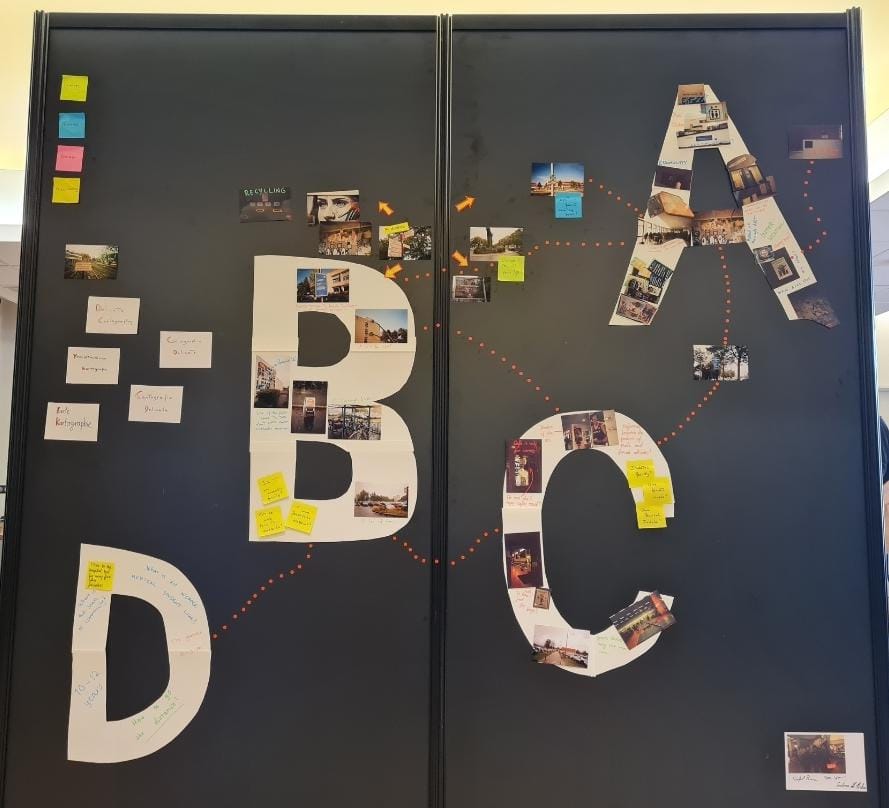From October 16th to October 19th, 2023, approximately 80 students engaged in a week-long preparation for a culminating public walkthrough session. Facilitated by artists from Poitiers and its environs, the students were previously invited to articulate their preferences regarding the artistic medium through which they intended to explore the themes of gender and inclusion. Subsequently, they were organized into groups with an effort to accommodate their stated preferences.
During the workshops, each participant was encouraged to articulate their personal perspective on the subject matter, delineating its significance to them. Collaboration with fellow students, hailing from various universities within the EC2U Alliance, was also mandated. Thus, this cooperation among individuals who were often unfamiliar with one another and occasionally from diverse cultural backgrounds was also complicated when participants were required to navigate unfamiliar artistic mediums, further influencing the conceptualization and execution of their ideas.
More or less conscious gender clichés – Dancing and acting
The first group was accompanied by the artist who has written and directed a play called Happy Male which opened the student programme of the Forum. The workshop was therefore based on the creation processes of the play, that is to say a combination of movement explorations and writing exercises. The workshop therefore aimed at addressing how gender clichés are performed, consciously or not, thinking of gender as a body language and interrogating the dominations it embodies. The result of these explorations was presented during the public walkthrough session: the students danced in a scenic area of a tent, the public was sited as each student seemed to dance to their own tune, each repeating different movements, sometimes moving together, sometimes independently on a recording of music on top of which was added a recording of them reading the texts they had written. These personal texts were sometimes told in English but mostly in their own language.
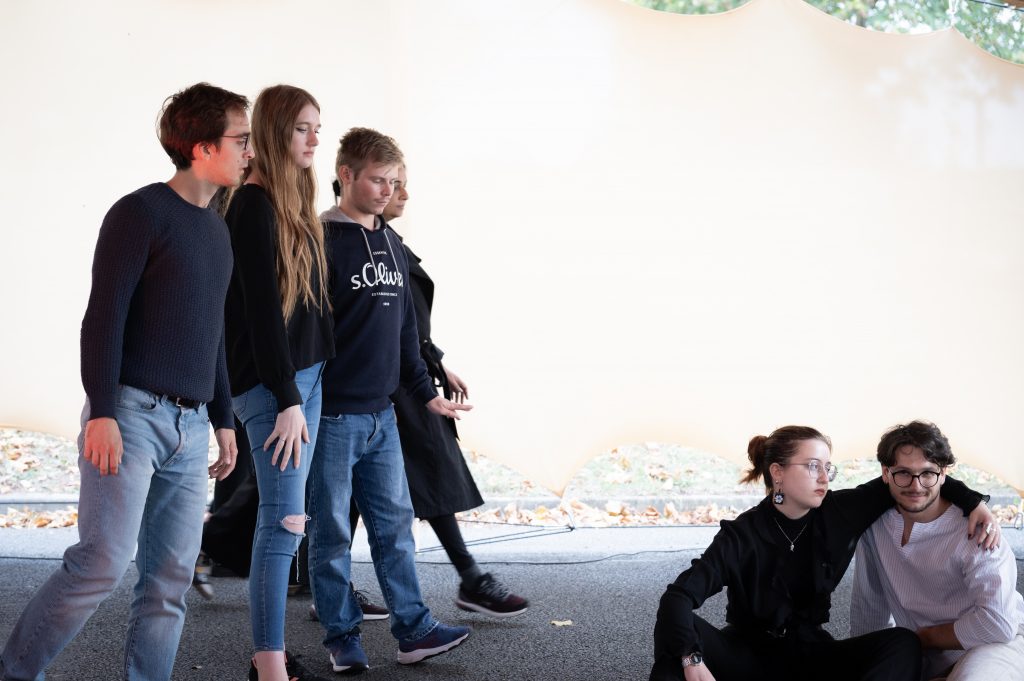
My gendered body in public space – Theatre
In this workshop, participants were encouraged to contemplate the nuanced dynamics of our presence in public spaces, exploring potential disparities between the experiences of men and women and questioning the true nature of the ostensibly public realm. The exploration of these matters took place through a combination of theatrical exercises and written reflections centered on the theme of “My gendered body in public space.” Students also launched a quiz to make the audience think about its own way to occupy public space. The culminating presentation featured an ambulatory performance, where small groups, serving as guides, led the audience through the final presentations of each workshop. In the course of this interactive journey, participants had the opportunity to recite their own written compositions and administer the quiz to the public. These student guides played a pivotal role in unifying the entirety of the final walkthrough session, concurrently presenting their own artistic contributions addressing themes of gender and equality.
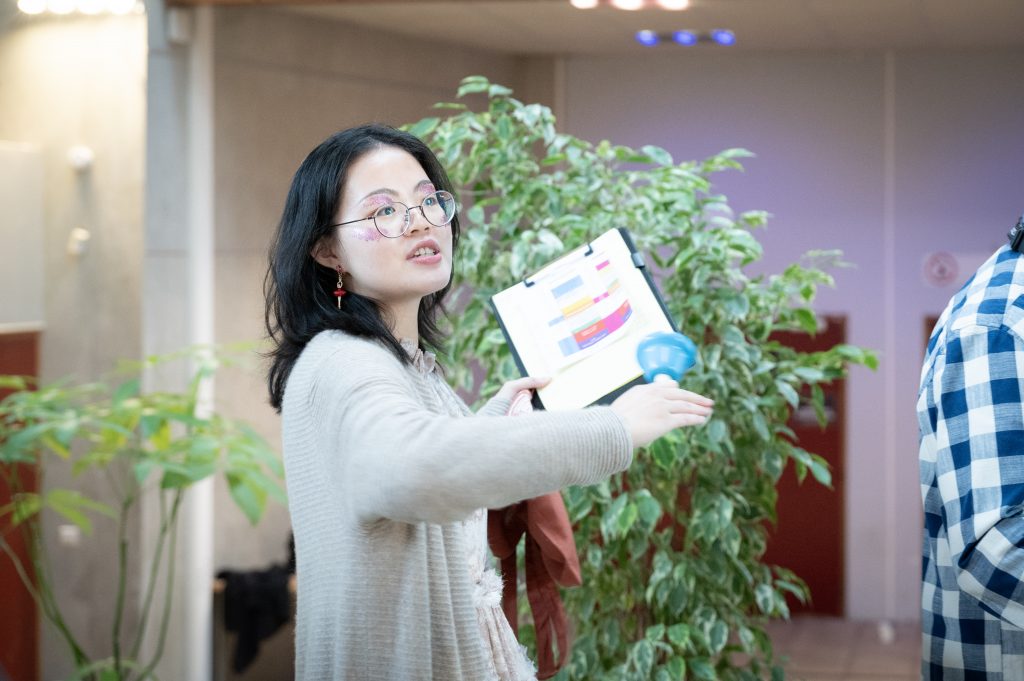
Scènes de genre – Photographs
This group concentrated on the creation of photographs that delved into concepts surrounding roles, stereotypes, discriminations, inequalities, bias, and violence in relation to gender issues. Each image aimed to depict a manifestation of sexist behavior, drawing inspiration from a student’s recollection or personal experience, as well as external sources such as documentaries or scenes from films.
The methodology involved the faithful reenactment of identified scenes in front of the camera. This entailed a carefully orchestrated photographic setup wherein other students assumed specific roles, rigorously adhering to the instructions provided by one or more students. The photographic sessions transpired within an unadorned and neutral space, devoid of any scenic elements, against a light background. The meticulous arrangement of body positions, attitudes, gestures, glances, and interactions among the subjects served to convey the intended message.
The resulting photographs from this workshop were subsequently exhibited and presented in a large format as a slide show during the Voice of Students final showcase.
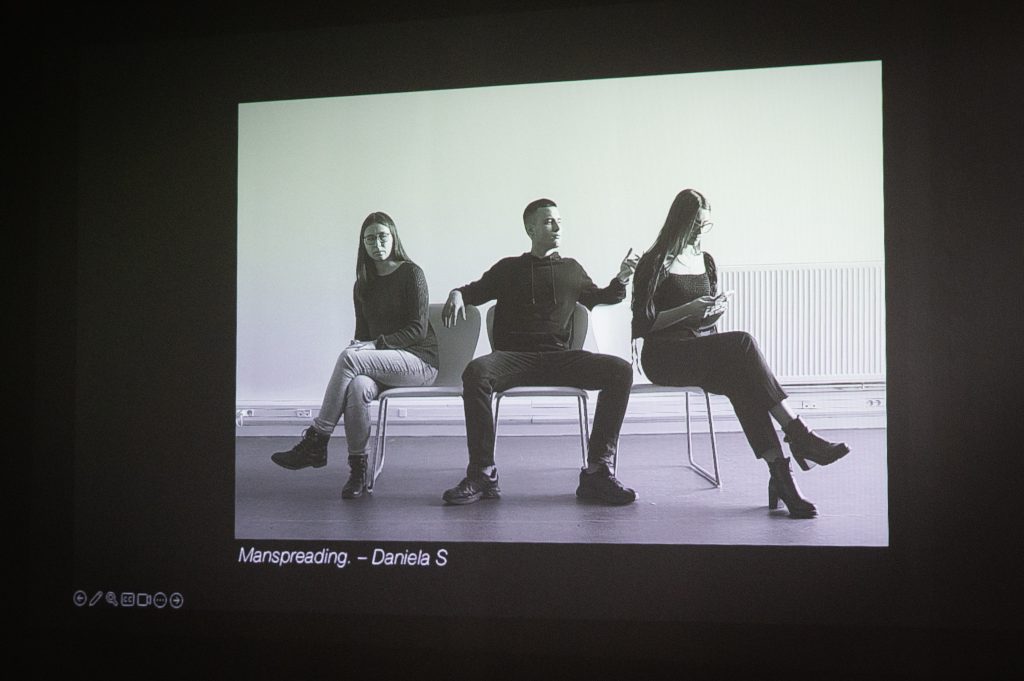
Students’ voice memory – Filming
This workshop primarily served as a documentation endeavor for the preceding workshops. The overarching objective was to produce a concise film that encapsulated the processes of the other workshops, employing a personalized approach reminiscent of filmmakers such as Agnès Varda. Participants in this workshop consequently captured footage of rehearsals and creative developments wherein the subjects remained oblivious to the camera, providing the audience with an unscripted glimpse into their natural creative flow. Additionally, interviews were conducted, featuring students and, on occasion, the artist leading the respective workshop, directly addressing the camera and offering self-reflective testimonies.
The filming phase represented merely the initial stage, as subsequent efforts involved meticulous editing of the amassed footage. The final edited version was slated for exhibition on a screen during the ultimate walkthrough session.
Dance workshop on the breasts – Dancing
This dance workshop was designed exclusively for women, both transgender and cisgender, offering a platform for them to engage with their own breasts as a means of contemplating and challenging their identities. Participants delved into various aspects of their breasts, including weight, volume, movement, absence, and presence. They actively manipulated representations, exploring what they desired to reveal or conceal and endeavoring to embrace and guide the movement emanating from this profound introspection. Each student brought a distinctive relationship with their body and a unique set of experiences to this intimate journey.
The final restitution took place in a small room, with a small number of people in the audience, which meant doing the dance several times. The students joined the floor one by one, culminating in a private yet delicate collective dance. The students of this workshop had also decorated the room in which the dance took place, notably by drawing breasts and chests of various shapes.
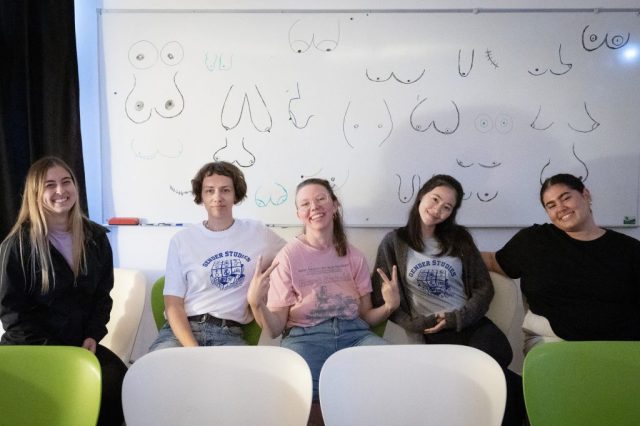
Danse et Corps en mouvement – Dancing
There was an additional workshop centered on dance, namely the “Danse et Corps en Mouvement” workshop. This particular workshop served as a choreographic and reflective space, providing participants with an opportunity to express their individual personalities and ideas, contributing to a collective contemplation. Conceptualized as a laboratory for experimentation and research, its purpose was to cultivate a body language that encompassed both poetic and political dimensions. Diverging from certain previously discussed workshops, its objective was to deviate from the constraints of representational norms, fostering a free exploration of movement.
The culmination of this workshop was the final presentation during the walkthrough—a performance intended for the entire audience, without the previous division into smaller groups. During this presentation, students executed dance routines against the backdrop of creations from other workshops. The choreography involved forming a circle, followed by duos, all executed in circular motions, symbolizing a convergence of elements as if everything were finally coming together.
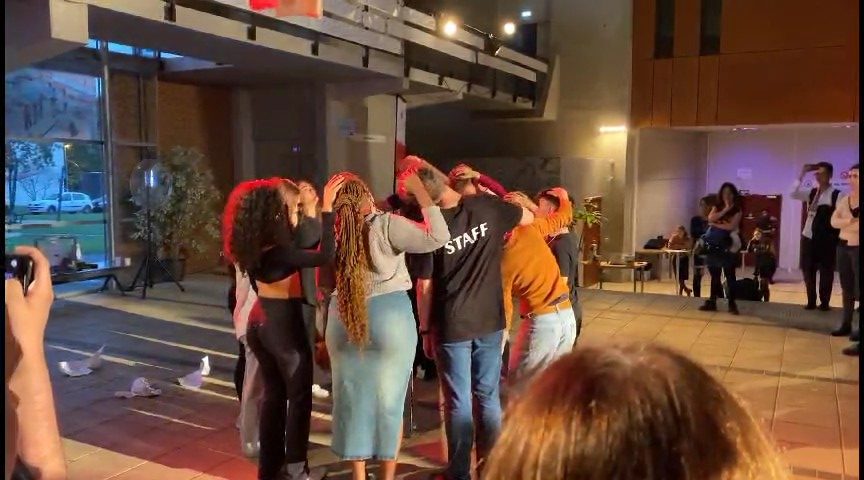
If I were on the other side – Social design
Employing a spatial, graphic, and photographic methodology, this group directed its focus towards the meticulous creation of a nuanced (self)portrait depicting an alternative facet of the gender spectrum. The overarching objective was to delve into the intricacies of individual identities and unravel the dynamics of social and gender-based inequalities. Initially, students photographed themselves, capturing their gender identity on a particular day, and subsequently captured an image of themselves situated elsewhere on the gender spectrum.
Utilizing the second image as a foundation, participants crafted a persona through digital or physical means, such as drawing or collage. The amalgamation of these two images—depicting the individual and their constructed persona—was then integrated into a specified setting. To further articulate their reflective process, participants incorporated speech bubbles to illustrate how the depicted entities resonated within that particular environment. The resultant creations were exhibited on a wall during the final presentation.

World of drag – Costume or makeup
The workshop, titled “World of Drag – Costume or Makeup,” served as an introductory exploration into the realm of drag performance. Commencing with a historical overview of drag and an examination of diverse drag categories (queen, king, queer, creature, clown, etc.), participants proceeded to develop their own drag personas, guided by artistic preferences, intended messages, and chosen aspects of the gender spectrum.
Participants focused on the customization of masks and the utilization of pre-existing clothing, as opposed to delving into the intricate artistry of makeup, sewing, wig styling, and pad shaping. The workshop encouraged an exploration of any facet of the gender spectrum, regardless of personal resonance, as expressed through choices in facial features, colors, and attire. To amplify the political aspect of drag, participants conveyed their messages through written statements displayed on a walkway above the area where other workshops conducted their showcases. During the final walkthrough, a drag artist orchestrated a brief theatrical performance, drawing attention to the written messages. The performance concluded with the artist indicating the suspended outfits and masks, which ascended from the floor to the ceiling.
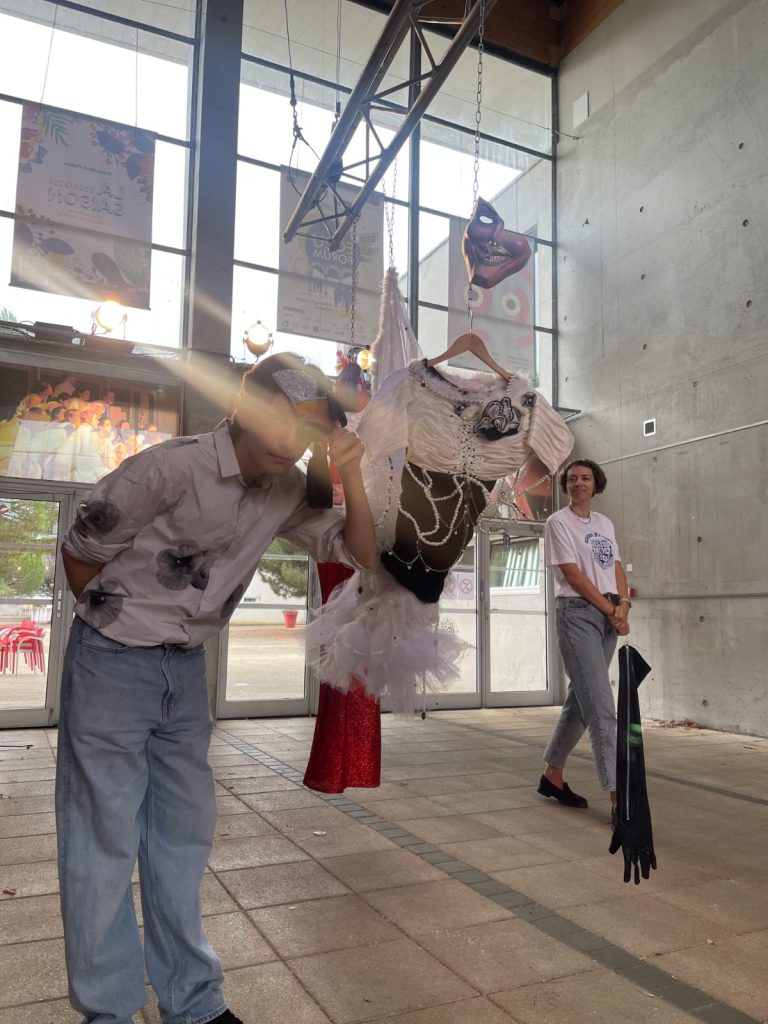
Skipping rope
This workshop commenced with a singular objective: the transformation of the skipping rope into an inclusive discipline devoid of gender associations. Collaborating with two circus artists, participants were tasked with collectively devising a concise circus performance. The artists introduced the physical discipline of the skipping rope, and students infused it with their individual ideas and thematic significance. This thematic essence was intended to manifest through both physical gestures and spoken expression.
During the final presentation, a narrator guided the audience through the performance accompanied by music. Initially, female participants engaged in skipping rope activities and singing nursery rhymes, while male participants pursued football activities separately. In the subsequent phase, these activities ceased to be gender-specific, and participants collectively executed an intricate skipping rope sequence. In the final segment, members of the audience were invited to actively participate in either the skipping rope or football activities, irrespective of gender distinctions.
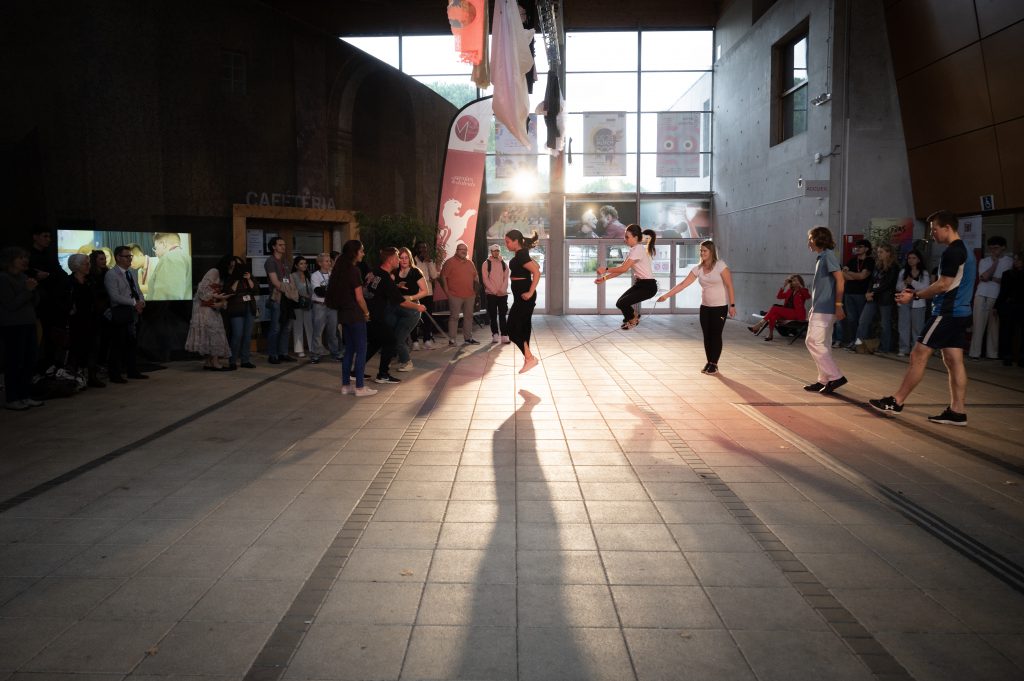
Campus Stand Up
Several students had the opportunity to venture into stand-up comedy for the first time. Prior to their public performance, they engaged in preparatory exercises rooted in theatre techniques. These exercises aimed to enhance the freedom of bodily movements, refine speech clarity, and cultivate a commanding stage presence. Additionally, participants dedicated time to crafting personal stand-up comedy scripts, initially working on individual pieces before collaborating in a group setting within a supportive environment.
The public presentation of this workshop distinguished itself as the first to convene the entire audience in a unified manner. Unlike other workshops that featured smaller groups moving between exhibitions or shows, guided by students from the respective workshops, this workshop assembled the entire audience, a crucial element for fostering a positive atmosphere of laughter. Following a brief introduction by the workshop’s artist, a student assumed the role of Master of Ceremony. Subsequently, each student from the workshop took the stage individually, delivering a blend of personal anecdotes and perspectives on gender and inclusion. The result was a heartwarming and humorous performance.
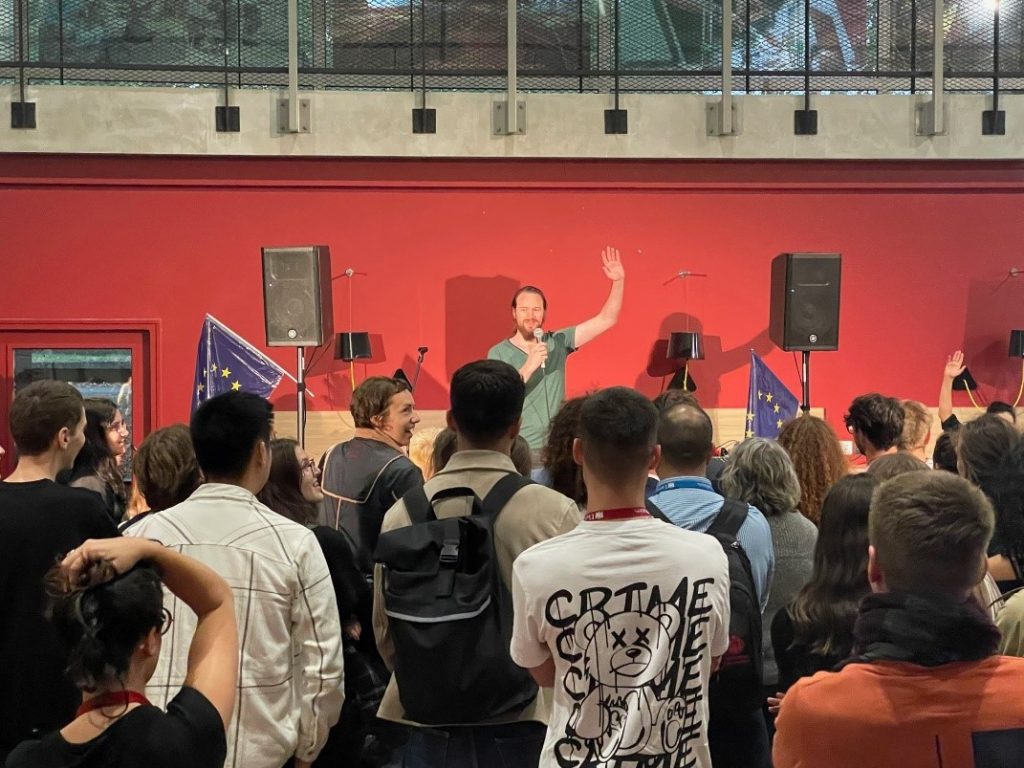
Delicate cartography – Photographs
This workshop endeavored to construct a “delicate cartography through photography” with the specific objective of elucidating the diverse perspectives of young Europeans regarding gender equality within the urban landscape, particularly in the vicinity of the University of Poitiers campus. Participants were encouraged to freely roam and explore the campus, armed with either their smartphones or cameras provided by theorganising teams. Their task involved capturing snapshots that would articulate their urban observations and interpret the non-geographical dimension of gender within the city, presented in the form of an artistic map.
In presenting their findings to the public, the students, in collaboration with the artist, curated an exhibition wherein they amalgamated the captured photographs with accompanying messages. It is noteworthy that the students deliberately chose not to adhere to the actual map of the campus; instead, they opted to reimagine it in alignment with their expressive intentions. Additionally, blank post-it notes were strategically placed to encourage public engagement, resulting in the gradual emergence of messages, jokes, and remarks. This interactive process metaphorically transformed the exhibition space into a burgeoning city, akin to a village evolving and expanding as more visitors interacted with the display.
=
Further information
Photo credits: University of Poitiers

